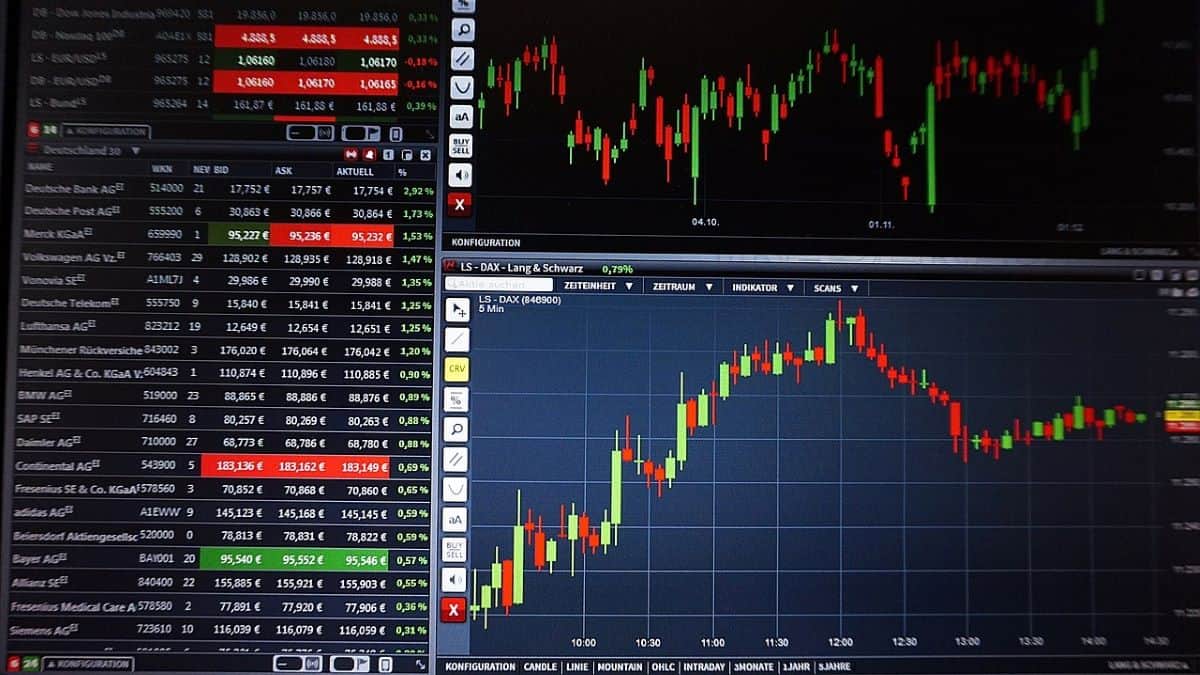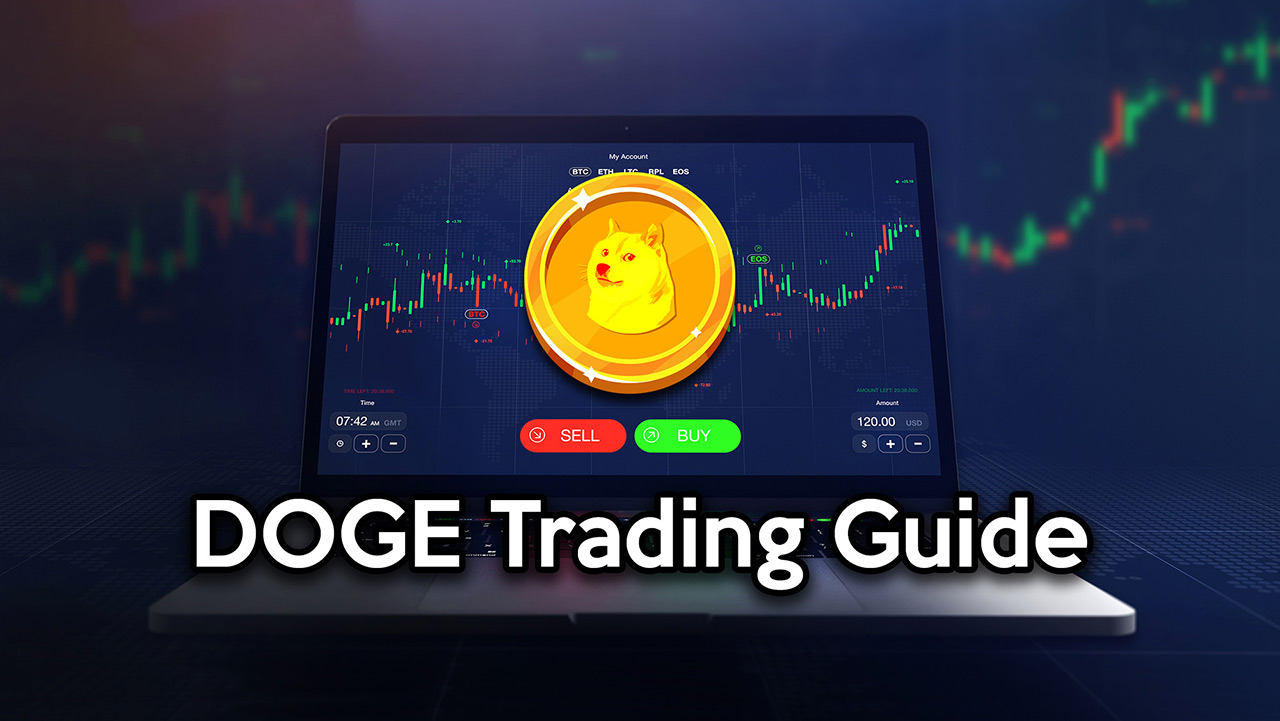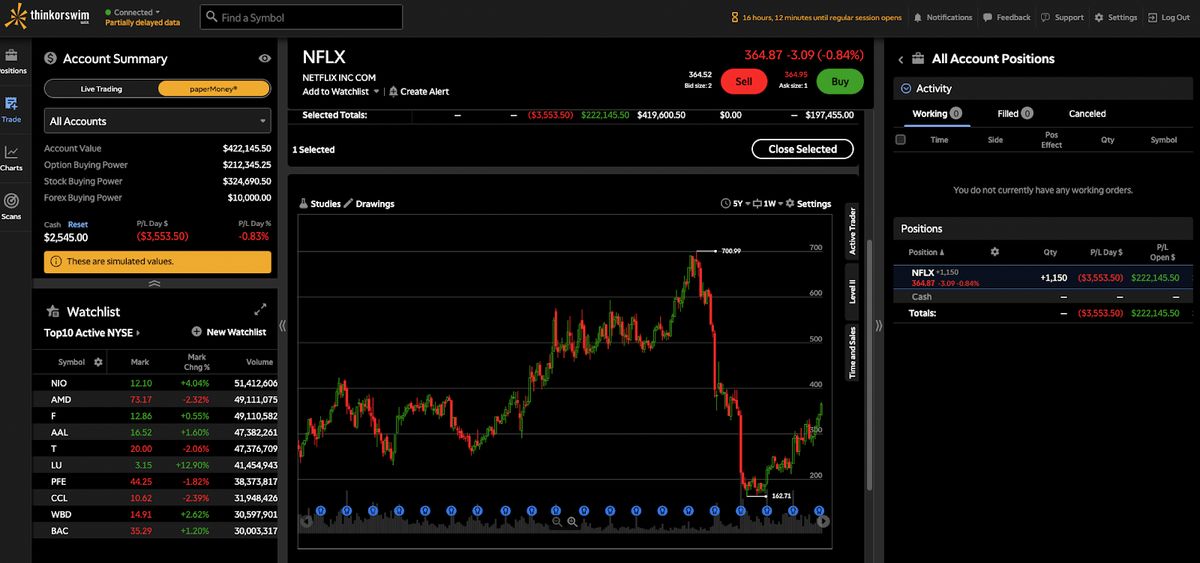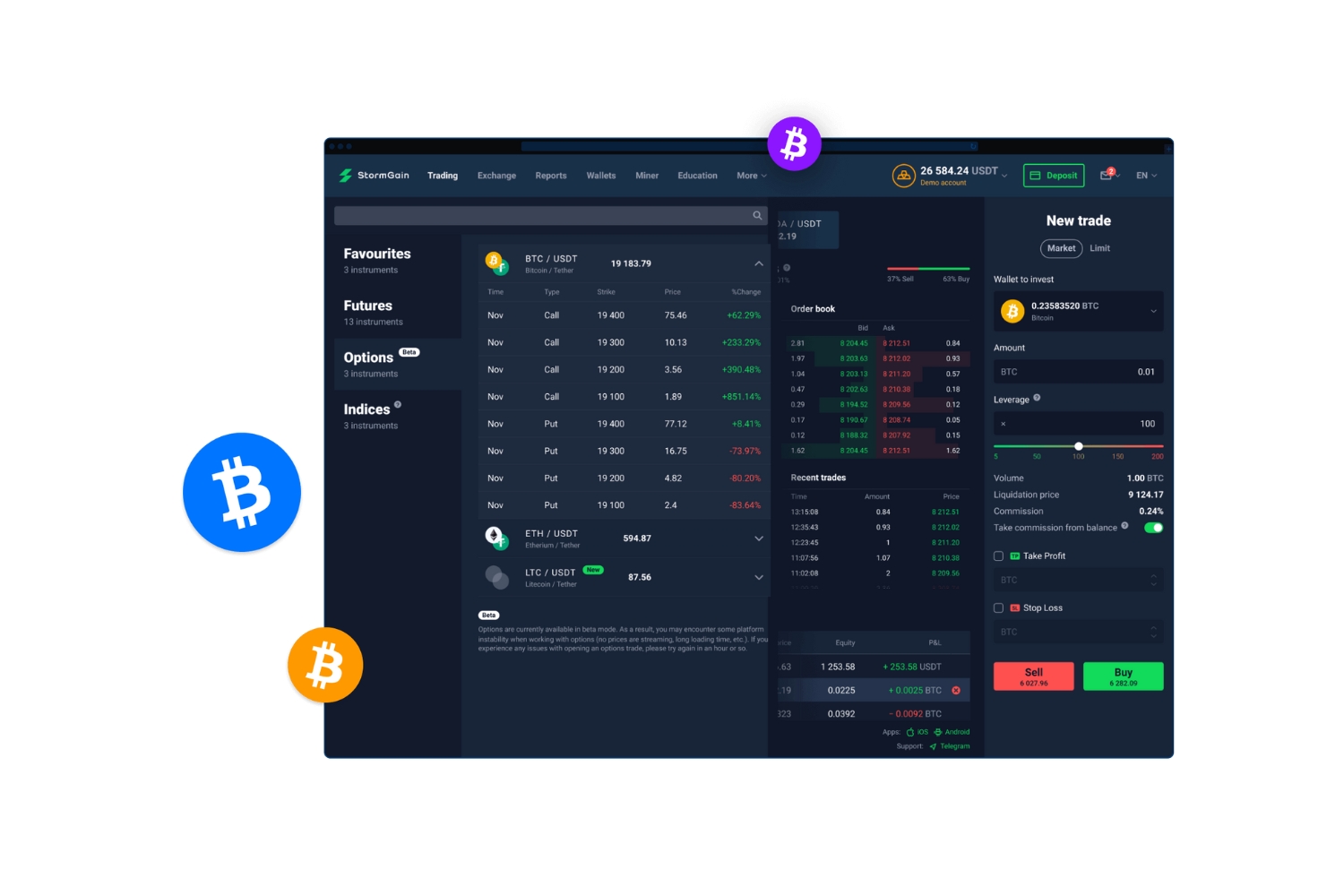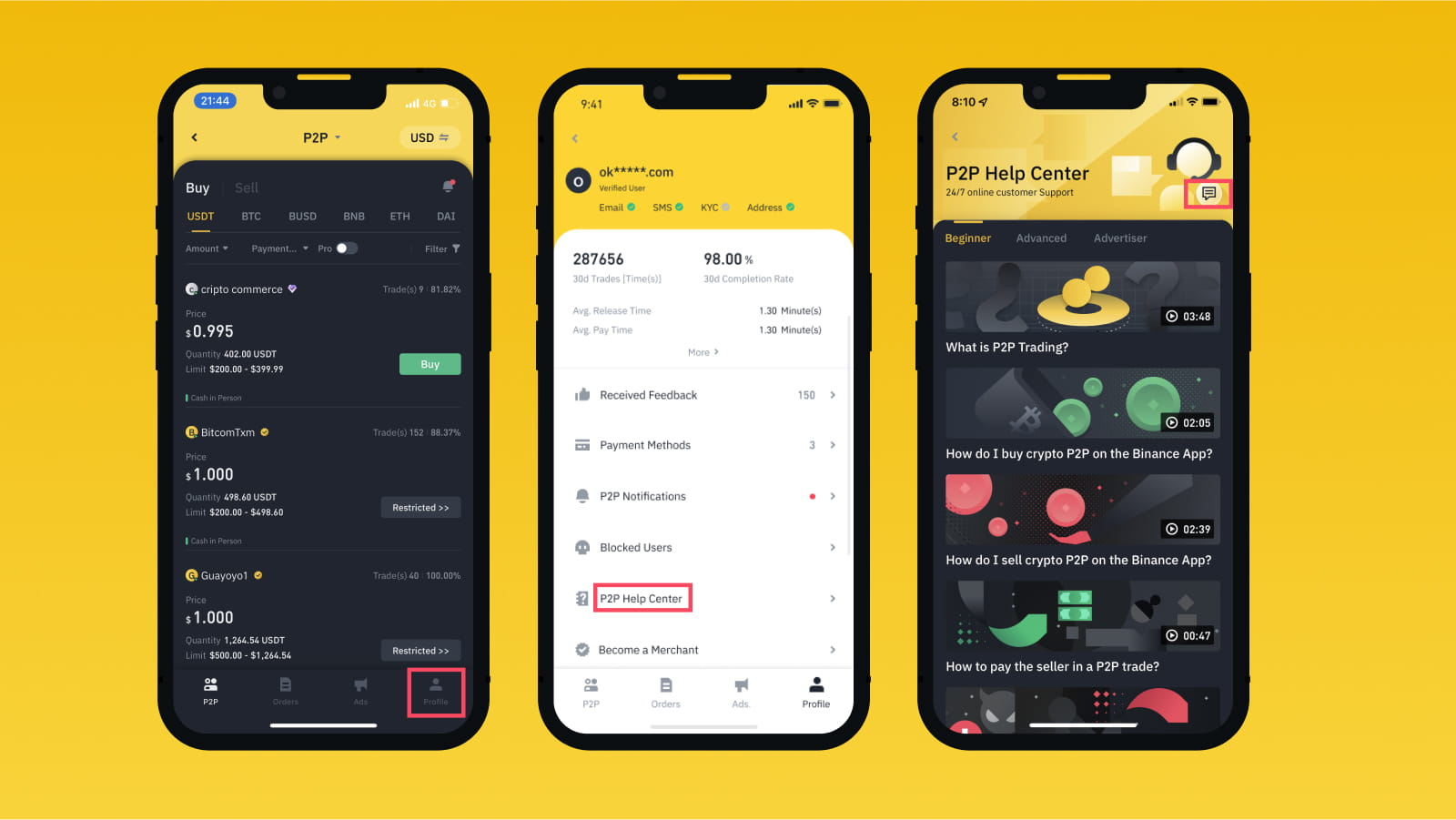Introduction
Welcome to the world of trading! Whether you are a seasoned investor or just starting out, having access to a reliable trading platform can make all the difference in your success. In today’s fast-paced and interconnected financial markets, having the right tools at your disposal is crucial.
But what exactly is a trading platform? In simple terms, it is a software application that allows traders to buy and sell financial instruments such as stocks, bonds, currencies, and commodities. It provides users with a user-friendly interface and a range of features to execute trades and manage their investment portfolios.
Trading platforms have revolutionized the way people trade. Gone are the days of calling a stockbroker to place trades on your behalf. With a trading platform, you have the power to make investment decisions at your fingertips.
There are various types of trading platforms available, each catering to different types of traders and investment strategies. From online brokers to specialized platforms, the choices are vast. Selecting the right trading platform is crucial to ensure that it aligns with your trading goals and preferences.
In this article, we will explore the world of trading platforms. We will delve into the different types available, highlight some popular platforms in the market, discuss key features to consider, and provide insights to help you choose the right trading platform for your needs.
So, whether you are a day trader looking for real-time market data, or a long-term investor seeking a platform with robust research tools, this article will guide you through the essential aspects of trading platforms. Let’s dive in!
What is a Trading Platform?
A trading platform is a software application or an online platform that enables traders to execute trades in financial markets. It acts as an intermediary between traders and the market, providing them with the tools and features necessary to participate in buying and selling various financial instruments.
At its core, a trading platform allows users to view real-time market data, place orders, and monitor their positions. It provides a user-friendly interface that simplifies the complex process of trading, making it accessible to both experienced investors and beginners.
Trading platforms are available in various forms, including desktop applications, web-based platforms, and mobile apps. They are typically provided by online brokers or financial institutions that offer trading services. These platforms may differ in terms of functionality, features, and accessibility, but their primary objective is to facilitate efficient trading.
One of the key features of trading platforms is the ability to access and analyze market data in real time. Traders can view price quotes, charts, and other relevant information related to the financial instruments they are interested in. This data helps them make informed decisions and identify potential trading opportunities.
Another essential aspect of trading platforms is order execution. Traders can place various types of orders, such as market orders, limit orders, and stop-loss orders, to execute trades at the desired prices. The platform then sends these orders to the relevant exchanges or market makers for execution.
In addition to executing trades, trading platforms also provide tools and features for portfolio management. Traders can monitor their holdings, view their transaction history, and access performance reports. Some platforms even offer advanced features like risk management tools, portfolio analysis, and automated trading strategies.
Moreover, trading platforms often offer research and educational resources to help traders make informed decisions. They may provide market news, analysis, and research reports to keep users updated on the latest market trends. Some platforms also have social trading features, allowing traders to interact and share insights with the community.
In summary, a trading platform is a crucial tool for traders to participate in financial markets. It provides access to market data, order execution capabilities, portfolio management tools, and research resources. Whether you are a retail investor or a professional trader, a trading platform is an essential component of your trading journey.
Types of Trading Platforms
Trading platforms come in various types, each catering to different trading styles, levels of expertise, and market segments. Understanding the different types of trading platforms can help you choose the one that best aligns with your trading goals. Here are some of the most common types:
- Online Brokerage Platforms: These platforms are provided by online brokers and are suitable for retail traders and investors. They offer a wide range of financial instruments, including stocks, bonds, ETFs, and options. Online brokerage platforms typically provide a user-friendly interface, real-time market data, and order execution capabilities.
- Forex Trading Platforms: Forex trading platforms are specifically designed for trading in the foreign exchange market. They allow traders to trade currency pairs and take advantage of fluctuations in exchange rates. These platforms come with features like charting tools, technical analysis indicators, and news feeds specifically tailored for forex trading.
- Options Trading Platforms: Options trading platforms are designed for traders who engage in options trading. These platforms offer tools and features to analyze options strategies, view options chains, and place options trades. They also provide real-time data on options prices and volatility.
- Futures Trading Platforms: Futures trading platforms enable traders to trade commodities, currencies, stock indices, and more. These platforms provide real-time market data, order execution capabilities, and advanced charting tools. They are typically used by professional traders and institutions.
- Cryptocurrency Trading Platforms: With the rise of cryptocurrencies, specialized platforms have emerged for trading digital assets like Bitcoin, Ethereum, and other altcoins. Cryptocurrency trading platforms provide access to various crypto exchanges, allowing users to buy, sell, and trade cryptocurrencies with ease.
- Social Trading Platforms: Social trading platforms combine the elements of trading and social networking. These platforms allow users to follow and copy the trades and strategies of successful traders. They also offer features for community interaction, such as forums, chat rooms, and trading groups.
It’s important to consider your trading preferences, the markets you want to trade in, and the features that are most important to you when selecting a trading platform. By understanding the different types available, you can narrow down your options and choose the platform that best suits your needs.
Popular Trading Platforms
With the growing popularity of online trading, there are numerous trading platforms available in the market. Here are some of the most popular trading platforms used by traders around the world:
- MetaTrader: MetaTrader is a widely used trading platform in the forex and CFD markets. Known for its powerful charting capabilities and a wide range of technical analysis tools, MetaTrader offers a user-friendly interface and supports automated trading through expert advisors (EAs).
- Thinkorswim: Thinkorswim, offered by TD Ameritrade, is a feature-rich trading platform suitable for both beginners and experienced traders. It provides advanced charting tools, real-time market data, and a wide range of investment options, including stocks, options, ETFs, futures, and forex.
- E*TRADE: E*TRADE is a popular online brokerage platform that provides powerful trading tools and a wide variety of investment options. It offers a user-friendly interface, research resources, and a robust mobile app for trading on the go.
- Robinhood: Robinhood has gained significant popularity for its commission-free trading model, making it attractive for beginners and cost-conscious traders. While it offers a limited range of investment options, Robinhood provides an intuitive mobile app and an easy-to-use interface.
- Interactive Brokers: Interactive Brokers is a well-established platform known for its low-cost trading and extensive market access. It offers a wide range of investment options, advanced order types, and powerful trading tools suited for active traders and institutions.
- Plus500: Plus500 is a CFD trading platform that provides access to a diverse range of markets, including stocks, forex, commodities, and cryptocurrencies. It offers a user-friendly interface, real-time market data, and a risk management tool called a guaranteed stop-loss order.
These are just a few examples of the many trading platforms available. When choosing a platform, it’s essential to consider factors such as the range of financial instruments, ease of use, reliability, cost, and customer support. It’s recommended to try out demo accounts or take advantage of free trials to get a feel for the platform before committing to a specific one.
Remember that the popularity of a trading platform may vary depending on your geographic location and the specific financial markets you wish to trade in. It’s always a good idea to research and compare different platforms to ensure that you select the one that best suits your trading needs.
Features to Consider
When choosing a trading platform, it’s essential to consider the features it offers. Different platforms provide varying functionalities and tools that can significantly impact your trading experience. Here are some key features to consider:
- User-Friendly Interface: A trading platform should have an intuitive and user-friendly interface. Look for platforms with customizable layouts and easy navigation to ensure smooth and efficient trading.
- Real-Time Market Data: Access to real-time market data is crucial for making informed trading decisions. Look for platforms that provide live and accurate market data, including price quotes, charts, and news updates.
- Order Types and Execution: Check if the platform supports various order types, such as market orders, limit orders, stop-loss orders, and trailing stop orders. Additionally, ensure that the platform offers fast and reliable order execution, minimizing delays and slippage.
- Charting and Technical Analysis Tools: Advanced charting capabilities and technical analysis tools can be invaluable for traders. Look for platforms that offer a wide range of indicators, drawing tools, and chart types to support your trading strategies.
- Research Resources: Consider platforms that provide research tools, such as market news, analysis, and reports, to keep you informed about market trends and potential trading opportunities.
- Mobile Trading: If you prefer trading on the go, check if the platform offers a mobile app that is compatible with your device. A reliable mobile trading app allows you to monitor and execute trades from anywhere at any time.
- Risk Management Tools: Look for platforms that offer risk management tools, such as stop-loss and take-profit orders. These tools help you manage your risk and protect your capital in volatile market conditions.
- Customer Support: Consider the level of customer support provided by the platform. Look for responsive customer service, including live chat, phone support, and email assistance, to address any technical issues or trading-related queries that may arise.
Keep in mind that the importance of these features may vary depending on your trading style and objectives. Before making a decision, it’s recommended to try out demo accounts or take advantage of free trials to assess the platform’s features and functionality.
By carefully evaluating the features offered by different trading platforms, you can select the one that best aligns with your trading requirements and enhances your overall trading experience.
How to Choose the Right Trading Platform
Choosing the right trading platform is an important decision that can greatly impact your trading experience and success. Here are some factors to consider when selecting a trading platform:
- Define Your Trading Goals: Start by defining your trading goals and strategies. Are you a long-term investor or an active trader? Do you focus on stocks, forex, options, or other financial instruments? Understanding your trading goals will help narrow down the platforms that align with your specific needs.
- Research Platform Options: Conduct thorough research on different trading platforms available in the market. Compare their features, functionality, fees, and customer reviews. Look for platforms that have a good reputation, are user-friendly, and provide reliable services.
- Consider Your Trading Style: Different trading platforms cater to different trading styles. Determine whether you are a day trader, swing trader, or long-term investor. Some platforms offer advanced trading tools for active traders, while others focus on providing a user-friendly interface for casual investors.
- Assess Platform Usability: User-friendly platforms make trading more efficient. Look for platforms with intuitive interfaces, customizable layouts, and easy navigation. Consider whether the platform offers a demo account or a free trial, allowing you to test its usability and features before committing.
- Evaluate Cost and Fees: Consider the cost structure of each trading platform. Some platforms charge commission fees per trade, while others offer commission-free trading. Compare additional fees, such as account maintenance fees and data fees. Balance the cost with the services and features provided by the platform.
- Check Security and Regulation: Ensure that the trading platform you choose is reliable and secure. Check if the platform is regulated by a reputable financial authority and if client funds are held in segregated accounts. Look for platforms that have robust security measures, such as encryption and two-factor authentication, to protect your personal and financial information.
- Consider Customer Support: Reliable customer support is crucial when dealing with technical issues or trading queries. Check the availability and responsiveness of customer support, such as live chat, phone support, or email assistance. A responsive support team can provide prompt assistance and resolve any issues that may arise.
- Take Advantage of Educational Resources: Some platforms offer educational resources, including video tutorials, webinars, and articles. These resources can help you enhance your trading knowledge and skills. Consider if the platform provides educational materials that align with your learning preferences.
- Seek Recommendations: Seek recommendations from experienced traders or invest time in reading reviews and testimonials. Hearing from other traders can provide valuable insights into the pros and cons of different platforms, helping you make an informed decision.
Remember that the right trading platform is subjective and depends on your individual needs and preferences. Consider your trading goals, style, usability, cost, security, and support when evaluating different platforms. By thoroughly researching and assessing your options, you can choose the trading platform that best suits your requirements and maximizes your trading potential.
Pros and Cons of Trading Platforms
Trading platforms offer numerous benefits, but they also come with some drawbacks. Understanding the pros and cons of trading platforms can help you make a well-informed decision. Let’s explore them:
Pros:
- Convenience: Trading platforms provide the convenience of accessing financial markets anytime and anywhere through desktop applications or mobile apps. This allows you to trade at your own convenience, eliminating the need to rely on physical trading floors or traditional brokerage services.
- Wide Range of Financial Instruments: Trading platforms offer access to a wide range of financial instruments, including stocks, bonds, commodities, forex, and more. This allows you to diversify your investment portfolio and explore different trading opportunities.
- Real-Time Market Data: Trading platforms provide real-time market data, allowing you to monitor price movements, analyze charts, and identify potential trading opportunities. Having access to up-to-date information enhances your ability to make informed decisions.
- Order Execution: Trading platforms offer fast and efficient order execution. You can place trades with just a few clicks, and orders are executed almost instantly, reducing the risk of missing out on favorable market conditions.
- Advanced Tools and Analytics: Many trading platforms provide advanced charting tools, technical indicators, and analytics to help you analyze price trends, identify patterns, and develop trading strategies. These tools can enhance your trading skills and improve your chances of success.
- Automated Trading: Some trading platforms support automated trading strategies through the use of expert advisors (EAs) or trading robots. These tools enable you to implement pre-defined trading rules and algorithms, allowing for systematic trading and eliminating emotions from the decision-making process.
Cons:
- Technical Issues: Trading platforms are dependent on technology, and technical issues can occasionally occur. This can include platform downtime, glitches, or slow execution speed, which may disrupt your trading activities and potentially lead to financial losses.
- Learning Curve: Mastering a trading platform requires time and effort. Learning how to navigate the platform, use its features, and interpret market data may involve a learning curve, especially for new traders or those transitioning to a new platform.
- Market Volatility: Trading platforms provide access to volatile financial markets, which can result in significant price fluctuations. While these fluctuations present trading opportunities, they also come with risks. Market volatility can lead to sudden and unexpected losses if trades are not executed with caution.
- Overwhelming Amount of Information: Trading platforms offer a vast amount of information and tools, which can sometimes be overwhelming, especially for beginners. It is important to focus on relevant information and avoid over-analyzing or making impulsive decisions based on excessive market data.
- Risk of Overtrading: The ease of trading on platforms can lead to excessive trading activity, known as overtrading. This behavior can lead to increased transaction costs and impulsive trades without proper analysis, potentially resulting in losses.
- Dependency on Internet Connection: Trading platforms rely on a stable internet connection. If your internet connection is unreliable or experiences outages, it may hinder your ability to access the platform and execute trades promptly.
It’s important to weigh the pros and cons of trading platforms based on your individual circumstances and trading goals. Consider these factors carefully to make an informed decision and select a platform that aligns with your needs and risk tolerance.
Conclusion
Trading platforms have revolutionized the way we participate in financial markets. They provide accessibility, convenience, and a wide range of tools that empower traders to take control of their investment decisions. Whether you are a seasoned investor or just starting, choosing the right trading platform is essential for your trading success.
In this article, we explored the concept of trading platforms and discussed different types available, including online brokerage platforms, forex trading platforms, options trading platforms, and more. We also highlighted some popular trading platforms in the market, such as MetaTrader, Thinkorswim, and Robinhood.
We delved into the features to consider when selecting a trading platform, including user-friendly interface, real-time market data, order execution capabilities, charting tools, research resources, and mobile trading options. We also discussed the pros and cons of trading platforms, noting their convenience, wide range of financial instruments, real-time market data, and advanced tools, but also highlighting potential technical issues, learning curve, market volatility, and the risk of overtrading.
Ultimately, choosing the right trading platform requires careful consideration of your trading goals, style, usability, cost, security, support, and educational resources. It’s important to conduct thorough research, seek recommendations, and even take advantage of demo accounts or free trials, before making a decision.
Remember, no trading platform is perfect for everyone, and the best choice will depend on your individual needs and preferences. Assess your goals, evaluate the features and functionality of different platforms, and consider factors like usability, cost, security, and customer support. By doing so, you can find a trading platform that suits your requirements and empowers you to navigate the fascinating world of financial markets.







